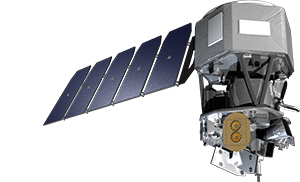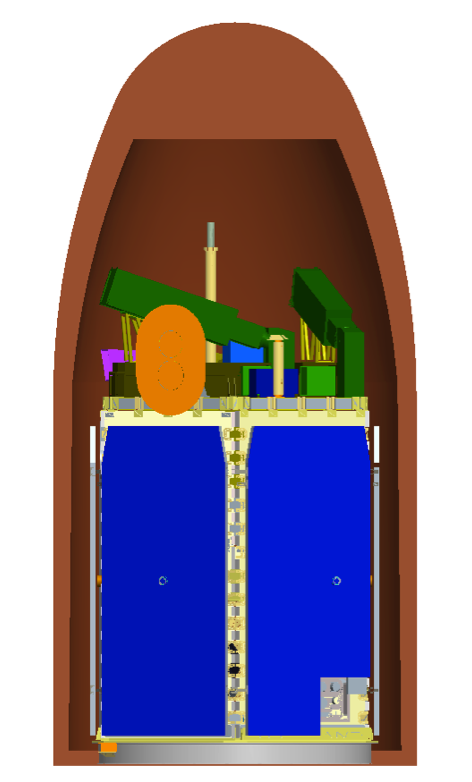The ICON science payload is accommodated on the Orbital ATK LEOStar-2 spacecraft. The LEOStar-2 platform has been used on four of the last six Explorer missions, so it’s clearly well suited to this mission class. All spacecraft components have a high degree of flight heritage from previous Orbital Explorer missions, such as GALEX, AIM and NuSTAR. ICON is optimally packaged for launch on the Pegasus XL; this is America’s most reliable small, low-cost launcher with 27 successful launches in a row. FAST, RHESSI, and NuSTAR, three missions operated by the UCB/SSL Mission Operations Group, were launched on the Pegasus, and NuSTAR is also a LEOStar-2.
ICON is a straightforward application of the existing LEOStar-2 line. Mechanical support and accommodation is provided by a six-sided aluminum honeycomb structure with mounting rings top and bottom to interface with the science payload and the launch vehicle. Attitude control is provided with a zero momentum bias system that includes actuators sized to perform all of ICON’s attitude maneuvers for science. Two star-trackers and an inertial measurement unit provide the information necessary to keep the instrument suite continually pointing at the Earth’s limb as the observatory orbits the planet. The spacecraft generates ample electrical power using a single-wing solar array design to charge the Li spacecraft battery. The Master Avionics Unit provides command, controlling and data handling of the observatory. Data is downlinked to a network of ground stations, including Berkeley’s own 10-meter receiver, using an S-Band transponder. A passive thermal control system maintains the spacecraft and instruments in their operational range
Orbital ATK's flight experience with single-string spacecraft such as ICON has been excellent, with most previous missions operating past their design lifetimes. The spacecraft also features selective component redundancy and an autonomous, flight-proven fault management system to enhance reliability. The impressive past performance of the LEOStar-2, combined with high design margins, have helped ICON maintain a favorable risk profile throughout development.
For more information about Orbital ATK or the LEOStar-2 spacecraft platform please visit Orbital ATK’s Science and Environmental Satellite website.

Above, ICON in nominal Science State and Attitude. Below, ICON stowed in the Pegasus XL fairing.
